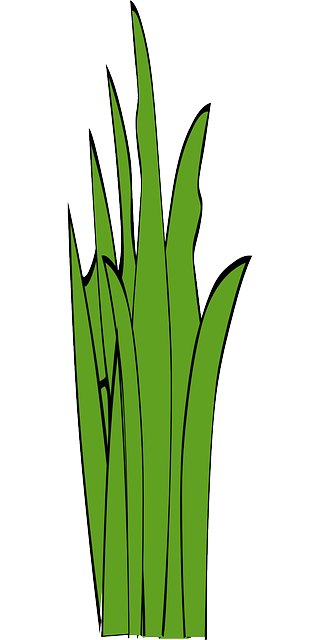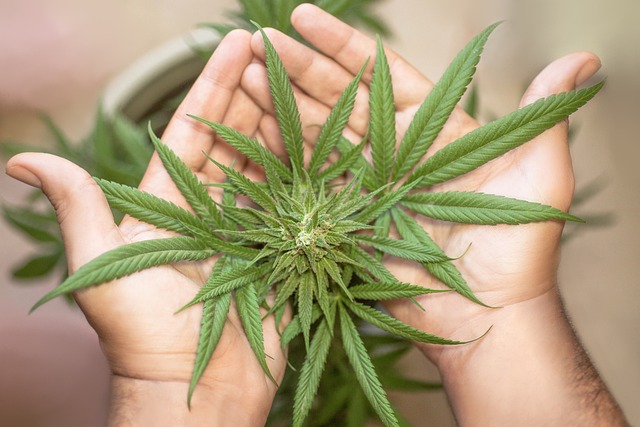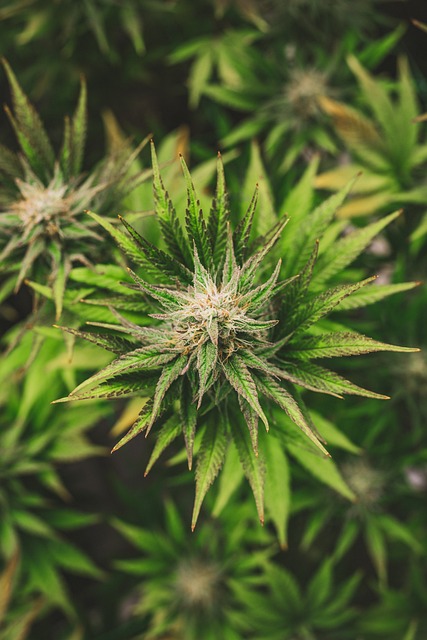
The THCA flower, rich in psychoactive properties and a precursor to THC, possesses distinct therapeutic qualities influenced by its unique terpene profiles. Myrcene, limonene, and caryophyllene are among the key terpenes that affect flavor, aroma, and the pharmacological effects of the flower. Myrcene's sedative properties can lead to drowsiness, while limonene provides a citrus note but may cause gastrointestinal distress. Caryophyllene has anti-inflammatory benefits and can either intensify or alleviate psychoactive effects based on concentration. Understanding these terpene profiles is crucial for users to predict side effects and personalize their use of THCA flower according to their health goals and tolerance, ensuring a safe and intended experience. As interest in THCA flower grows, it's important to note that individual responses can vary widely, ranging from mild to severe side effects, with the potential for conversion to THC leading to psychotropic effects. Users are encouraged to seek professional medical advice and exercise caution due to the complex nature of its interactions within the body.
Exploring the therapeutic and medicinal properties of THCA (Tetrahydrocannabinolic Acid) flower, this article sheds light on its complex terpene profiles and their influence on potential side effects. Delving into the intricate relationship between cannabinoids and terpenes, we aim to provide a clear understanding of how these compounds contribute to the experiences and outcomes when consuming THCA flower. Join us as we dissect the science behind its effects and offer insights into managing any adverse reactions associated with its use. Understanding the nuances of THCA flower terpene profiles is key to informed consumption and safe enjoyment.
- Unveiling the Terpene Profiles of THCA Flower and Their Implications on Side Effects
- A Comprehensive Look at the Potential Side Effects Associated with THCA Flower Consumption
Unveiling the Terpene Profiles of THCA Flower and Their Implications on Side Effects

The therapeutic and psychoactive properties of THCA flower, the raw form of tetrahydrocannabinolic acid, are intrinsically linked to its rich terpene profiles. These aromatic compounds, found abundantly in the cannabis plant, play a pivotal role in dictating not only the flavor and scent but also the effects of THCA flower. Myrcene, for instance, is commonly prevalent in THCA strains, contributing to its sedative and analgesic properties, which can exacerbate certain side effects such as drowsiness or lethargy in sensitive individuals. Limonene, another key terpene, imparts a citrus aroma and has been shown to uplift mood while potentially causing gastrointestinal discomfort in some cases. Caryophyllene offers a spicy, peppery note and possesses anti-inflammatory properties; however, it may induce psychoactive effects or respiratory irritation when consumed in high concentrations. The interplay of these terpenes influences the overall side effect profile of THCA flower, necessitating careful consideration by consumers to align with their wellness goals and tolerance levels. Understanding the specific terpene profiles of different THCA strains is crucial for users to anticipate potential side effects and manage their experience responsibly.
A Comprehensive Look at the Potential Side Effects Associated with THCA Flower Consumption

THCA flower, which contains tetrahydrocannabinolic acid, a non-psychoactive precursor to THC, has gained attention for its potential therapeutic benefits. However, as with any substance, it’s crucial to understand the full spectrum of effects it may produce in the human body. The terpene profiles of THCA flower are particularly noteworthy, as they play a significant role in modulating its effects and can influence the side effects experienced by users. Myrcene, for example, is one of the most abundant terpenes found in cannabis and is known for its sedative properties, which may lead to drowsiness or lethargy in some individuals. Limonene, on the other hand, can have an invigorating effect and may cause increased alertness or feelings of anxiety in higher doses.
When considering the potential side effects of THCA flower consumption, it’s important to recognize that individual reactions can vary widely based on factors like dosage, method of ingestion, personal physiology, and tolerance levels. Common reported side effects include dizziness, dry mouth, and red eyes, which are typically mild and transient. However, more severe side effects can occur, particularly if one consumes too much or combines THCA with other substances. It’s also worth mentioning that some users may experience psychotropic effects even from THCA flower, as the conversion to THC in the body can sometimes occur under certain conditions. As research continues to evolve, it is essential for consumers to approach THCA flower with caution and consult with healthcare professionals before incorporating it into their wellness regimen.
In conclusion, the exploration of THCA flower’s terpene profiles provides valuable insights into the potential side effects associated with its consumption. The intricate relationship between these compounds and their influence on one’s well-being underscores the importance of understanding the full spectrum of effects that THCA can induce. As with any substance, it is advisable for consumers to approach THCA flower with informed caution, considering individual sensitivities and the specific terpene profiles present in the product. With continued research and a focus on terpene profiles, users can make more informed decisions regarding the use of THCA flower, ensuring a safer and more enjoyable experience.







